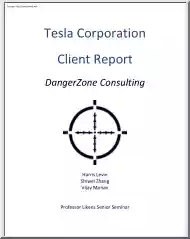Nincs még értékelés. Legyél Te az első!
Mit olvastak a többiek, ha ezzel végeztek?
Tartalmi kivonat
Source: http://www.doksinet Patient Information Leaflet Preparing for Nail Surgery and Your Aftercare What is nail surgery? Nail surgery is the removal of all of the toenail or part of the nail. A local anaesthetic is used so that you will feel no pain during the procedure. After the removal of the nail, a chemical may be applied to the exposed nail bed to prevent regrowth by destroying the nail cells. (However, it is possible that some nail regrowth may occur). Healing takes between four to eight weeks On the day of the surgery • Please take a bath or shower • Please remove all traces of nail varnish • Do not drink any alcohol • Eat a normal light meal before the surgery • Take any medication as normal unless advised otherwise • Bring suitable footwear that will fit over a bulky dressing • You must not drive straight after you have had the surgery • You should not travel home by public transport to avoid injury. The procedure The procedure will be performed in a
podiatry clinic by a podiatrist and normally takes less than 1 hour. A local anaesthetic will be injected into both sides of the base of the toe. The sensation of both touch and pressure are not affected, this is normal. The local anaesthetic may cause some discomfort when being injected into the toe. Once the toe has been fully anaesthetised, a tourniquet (tight band) will be applied to the toe to prevent bleeding during the procedure. After the surgery, the tourniquet will be removed, the toe will be checked for return of your blood supply to the toe and a sterile dressing will be applied. You will then remain for a short period of time in the clinic with your foot up and the dressing will be checked to make sure there is not too much bleeding before you leave the clinic. Continued overleaf. Originator: Podiatry Service email: patient.experience@wirralctnhsuk www.wirralctnhsuk Source: http://www.doksinet Possible side effects of local anaesthetic Side effects are rare, however
those that may occur are: • • • • • nervousness dizziness blurred sight or shakiness drowsiness fits • • • • loss of consciousness breathing difficulties low blood pressure slow heartbeat. In extremely rare cases, local anaesthetics have caused an allergic reaction with rashes, swelling or very low blood pressure. You must inform the podiatrist of any previous reactions or complications that have happened when you have had a local anaesthetic in the past. After the surgery • The toe may remain numb for up to 4 hours. You should rest the affected foot as much as possible, especially in the first 24 – 48 hours by raising it on a pillow or cushion • Take your normal painkillers to reduce any discomfort (if needed) and follow the instructions on the patient information leaflet. If you have been prescribed aspirin by your GP or consultant you should continue to take this • Keep the dressings dry and in place. A small amount of blood/fluid may appear through
the dressing This is normal. However, if you experience a lot of bleeding which cannot be stopped by raising your foot, you should seek medical advice. • Avoid drinking alcohol following the surgery • You may need time off from school or work. It is important to avoid any undue pressure or injury in the toe, it maybe advisable to inform your teacher/employer of the procedure that has been carried out. Redressings • The first redressing will be undertaken within seven days of the surgery. The bulky dressing will be replaced by a much thinner sterile dressing • Following nail surgery the toe will weep and stay moist at first. Small amounts of blood or discharge are normal and are an essential part of the healing process. This discharge does not mean that the wound has become infected • Do not use antiseptic creams, solutions or dressings as these may affect the wound healing process • If you experience a sudden increase in temperature, pain or excessive inflammation/swelling
this may indicate that the toe has become infected. Please contact your Podiatrist or GP or Out of Hours Services for advice as further treatment may be required • You will be monitored at the clinic until your toe has completely healed, normally about 6-10 weeks. (If you are planning a holiday during this period, please contact Podiatry prior to your appointment) • Avoid strenuous exercise or sport until the nail bed has fully healed. email: patient.experience@wirralctnhsuk www.wirralctnhsuk 0013 May 2013 V1
podiatry clinic by a podiatrist and normally takes less than 1 hour. A local anaesthetic will be injected into both sides of the base of the toe. The sensation of both touch and pressure are not affected, this is normal. The local anaesthetic may cause some discomfort when being injected into the toe. Once the toe has been fully anaesthetised, a tourniquet (tight band) will be applied to the toe to prevent bleeding during the procedure. After the surgery, the tourniquet will be removed, the toe will be checked for return of your blood supply to the toe and a sterile dressing will be applied. You will then remain for a short period of time in the clinic with your foot up and the dressing will be checked to make sure there is not too much bleeding before you leave the clinic. Continued overleaf. Originator: Podiatry Service email: patient.experience@wirralctnhsuk www.wirralctnhsuk Source: http://www.doksinet Possible side effects of local anaesthetic Side effects are rare, however
those that may occur are: • • • • • nervousness dizziness blurred sight or shakiness drowsiness fits • • • • loss of consciousness breathing difficulties low blood pressure slow heartbeat. In extremely rare cases, local anaesthetics have caused an allergic reaction with rashes, swelling or very low blood pressure. You must inform the podiatrist of any previous reactions or complications that have happened when you have had a local anaesthetic in the past. After the surgery • The toe may remain numb for up to 4 hours. You should rest the affected foot as much as possible, especially in the first 24 – 48 hours by raising it on a pillow or cushion • Take your normal painkillers to reduce any discomfort (if needed) and follow the instructions on the patient information leaflet. If you have been prescribed aspirin by your GP or consultant you should continue to take this • Keep the dressings dry and in place. A small amount of blood/fluid may appear through
the dressing This is normal. However, if you experience a lot of bleeding which cannot be stopped by raising your foot, you should seek medical advice. • Avoid drinking alcohol following the surgery • You may need time off from school or work. It is important to avoid any undue pressure or injury in the toe, it maybe advisable to inform your teacher/employer of the procedure that has been carried out. Redressings • The first redressing will be undertaken within seven days of the surgery. The bulky dressing will be replaced by a much thinner sterile dressing • Following nail surgery the toe will weep and stay moist at first. Small amounts of blood or discharge are normal and are an essential part of the healing process. This discharge does not mean that the wound has become infected • Do not use antiseptic creams, solutions or dressings as these may affect the wound healing process • If you experience a sudden increase in temperature, pain or excessive inflammation/swelling
this may indicate that the toe has become infected. Please contact your Podiatrist or GP or Out of Hours Services for advice as further treatment may be required • You will be monitored at the clinic until your toe has completely healed, normally about 6-10 weeks. (If you are planning a holiday during this period, please contact Podiatry prior to your appointment) • Avoid strenuous exercise or sport until the nail bed has fully healed. email: patient.experience@wirralctnhsuk www.wirralctnhsuk 0013 May 2013 V1



